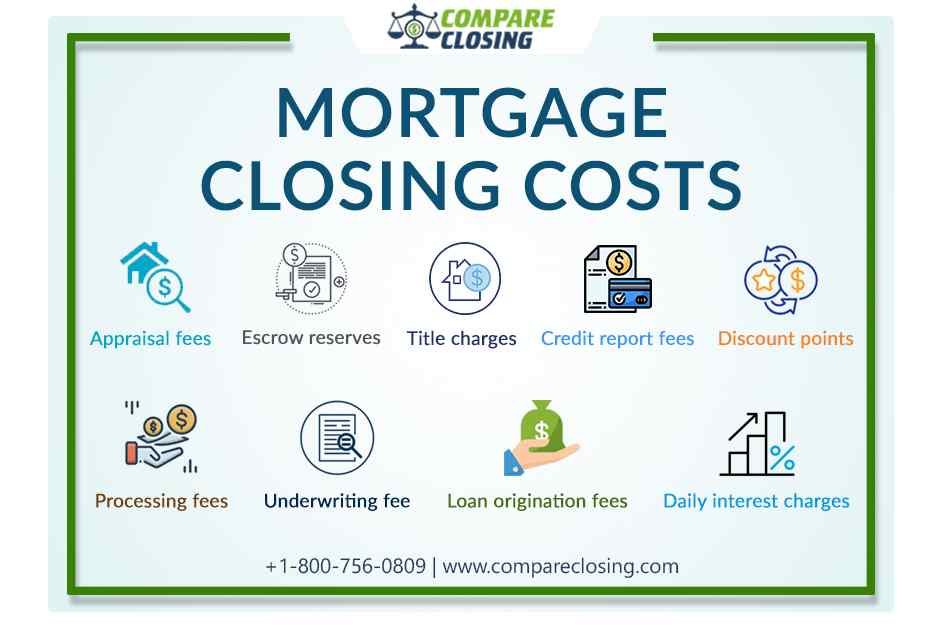We are an independent, advertising-supported comparison service. Our goal is to help you make smarter financial decisions by providing you with interactive tools and financial calculators, publishing original and objective content, by enabling you to conduct research and compare information for free – so that you can make financial decisions with confidence.
Bankrate has partnerships with issuers including, but not limited to, American Express, Bank of America, Capital One, Chase, Citi and Discover.
Purchasing a new home is an exciting time, but it can also be stressful trying to navigate the mortgage process and cover all the associated fees. Closing costs, in particular, can really add up and derail your homebuying budget. Thankfully, low closing cost home loans allow borrowers to finance their closing costs into the loan amount, eliminating most upfront fees at closing
In this comprehensive guide, we’ll break down everything you need to know about low closing cost mortgages. You’ll learn what closing costs are, how low closing cost loans work, eligibility requirements, pros and cons, and how to find the best lenders offering these affordable home financing options.
What Are Closing Costs?
When you purchase a home, there are a variety of fees charged by lenders and third parties to finalize and close on the mortgage. These closing costs typically range from 2% to 5% of the total loan amount. Some common fees include
-
Origination fees – Charged by the lender to process the loan application and underwrite the mortgage
-
Appraisal fees – Covers the cost of the home appraisal report
-
Credit report fees – Pays for the lender to access your credit reports
-
Title fees – Covers title search, title insurance, etc.
-
Recording fees – Charged by local government to record the deed and mortgage
-
Home inspection fees – If you elected to have a home inspection performed
-
Homeowners insurance premiums – Usually requires one year upfront
-
Property taxes – Prorated amount due at closing
-
Prepaids – Covers interest payments from closing date to first payment due date
As you can see, closing costs add up quickly. On a $300,000 mortgage, you could easily pay $6,000 to $15,000 in total closing costs.
How Do Low Closing Cost Loans Work?
With a traditional mortgage, the borrower must pay all closing costs upfront at closing. Low closing cost mortgages differ in that they allow you to finance most or all of the closing costs directly into the loan amount.
Rather than paying $15,000 out of pocket, the lender covers the costs and you simply repay the amount over the life of the loan. Your principal balance increases slightly, but your out-of-pocket costs are minimized.
There are a few different ways lenders structure low closing cost loans:
Lender credits – The lender provides a credit toward closing costs, often $1,000 to $5,000 depending on the loan program.
No origination fee – The lender waives their origination fee, which could save 1% to 2% of the total loan amount.
No appraisal fee – Lender pays for the appraisal instead of charging an upfront fee.
No discount points – Discount points lower the interest rate but add to closing costs. Not charging points reduces fees.
Prepaids – By financing prepaid interest and property taxes into the loan amount, fewer upfront costs are due at closing.
The lender will utilize a combination of these options to reduce your cash outlay. With some loans, you may pay no closing costs whatsoever or just a few hundred dollars.
Low Closing Cost Loan Eligibility
To qualify for a low closing cost mortgage, you’ll need to meet the following general requirements:
-
Credit score – Most lenders require a minimum score around 620. The higher your score, the better.
-
Down payment – Typically need at least 3% to 5% downpayment on conventional loans. Special programs may allow less.
-
Debt-to-income ratio – Your total monthly debt payments, including the new mortgage, should be less than 50% of gross monthly income.
-
Loan-to-value ratio – The loan amount divided by the home’s value shouldn’t exceed 80% to 97% depending on the loan.
-
Homebuyer education – Required for certain government and down payment assistance programs.
Always verify specific eligibility requirements directly with any lender you are interested in applying with, as they can vary. VA, FHA, and USDA loans may have more flexible qualifying guidelines.
Pros and Cons of Low Closing Cost Mortgages
Pros
- Pay less cash upfront at closing
- May allow you to buy sooner than saving for all closing costs
- Interest paid on financed closing costs may be tax deductible
Cons
- Slightly higher monthly mortgage payment
- Mortgage amount and loan-to-value ratio increases
- May be limited to certain loan programs
The pros often outweigh the cons when trying to buy a home on a budget. Just make sure you understand the tradeoffs and can still comfortably afford the monthly payment.
How To Find The Best Low Closing Cost Lenders
Finding lenders that offer low or no closing cost mortgages takes some research. Here are some tips:
- Get quotes from both banks and credit unions
- Ask about special first-time homebuyer programs
- Inquire with lenders that service your specific area
- Look for lenders that advertise closing cost assistance
- Read reviews and compare lender closing fee estimates
- Consider mortgage brokers that can shop multiple lenders
It also pays to improve your credit score and debt-to-income ratio. This will qualify you for better mortgage rates and terms from more lenders.
As you can see, low closing cost home loans allow borrowers to buy a house sooner while keeping more money in their pocket. Just make sure to shop around and compare options from multiple lenders. With a little legwork, you can find affordable financing that fits your budget and homeownership goals.

How to decide if a no-closing-cost mortgage is right for you
No-closing-cost home mortgages have advantages and disadvantages, and not everyone is a good candidate for one. It’s generally best for those buying a starter or temporary home that they’ll leave within a decade or so (as opposed to buying a forever home). Or, of course, it can work well for those who are absolutely strapped for cash, making a five-figure upfront payment a real problem.
Before committing to a zero-closing-cost mortgage, consider how long you plan to stay in the home and how much cash you have on hand that you’re willing to part with upfront.
How We Make Money
The offers that appear on this site are from companies that compensate us. This compensation may impact how and where products appear on this site, including, for example, the order in which they may appear within the listing categories, except where prohibited by law for our mortgage, home equity and other home lending products. But this compensation does not influence the information we publish, or the reviews that you see on this site. We do not include the universe of companies or financial offers that may be available to you.

At Bankrate we strive to help you make smarter financial decisions. While we adhere to strict , this post may contain references to products from our partners. Heres an explanation for . Bankrate logo
Founded in 1976, Bankrate has a long track record of helping people make smart financial choices. We’ve maintained this reputation for over four decades by demystifying the financial decision-making process and giving people confidence in which actions to take next.
Bankrate follows a strict editorial policy, so you can trust that we’re putting your interests first. All of our content is authored by highly qualified professionals and edited by subject matter experts, who ensure everything we publish is objective, accurate and trustworthy.
Our mortgage reporters and editors focus on the points consumers care about most — the latest rates, the best lenders, navigating the homebuying process, refinancing your mortgage and more — so you can feel confident when you make decisions as a homebuyer and a homeowner. Bankrate logo
Bankrate follows a strict editorial policy, so you can trust that we’re putting your interests first. Our award-winning editors and reporters create honest and accurate content to help you make the right financial decisions.
We value your trust. Our mission is to provide readers with accurate and unbiased information, and we have editorial standards in place to ensure that happens. Our editors and reporters thoroughly fact-check editorial content to ensure the information you’re reading is accurate. We maintain a firewall between our advertisers and our editorial team. Our editorial team does not receive direct compensation from our advertisers.
Bankrate’s editorial team writes on behalf of YOU – the reader. Our goal is to give you the best advice to help you make smart personal finance decisions. We follow strict guidelines to ensure that our editorial content is not influenced by advertisers. Our editorial team receives no direct compensation from advertisers, and our content is thoroughly fact-checked to ensure accuracy. So, whether you’re reading an article or a review, you can trust that you’re getting credible and dependable information. Bankrate logo
5 Ways to Get Closing Costs Paid with NONE of Your Personal Funds! | First Time Buyer Closing Costs
FAQ
Does FHA have lower closing costs?
Is a no closing-cost mortgage a good idea?
Can closing costs be negotiated?
How much does a No-Closing-Cost Mortgage cost?
A no-closing-cost mortgage helps with the fees by having the lender pay them up front. The lender makes up the difference by charging a higher interest rate for the duration of the loan. Closing costs can range anywhere from 3% – 6% of the price of the home.
What are mortgage closing costs?
Closing costs include fees for things like property taxes, appraisals and insurance, which are necessary for getting a mortgage. You need to pay them before you receive your mortgage on a property. Mortgage closing costs are usually a percentage of your loan amount averaging between 1.72% and 2.47%.
Which banks offer no closing cost mortgage loans?
Only some mortgage lenders offer no-closing-cost home loans. Bank of America, ThirdFederal Bank and PNC Bank, for example, all have no-closing cost mortgage programs, as do several credit unions. Are closing costs included in mortgage loans?
What should you look for in a No-Closing-Cost Mortgage?
When evaluating lenders for a no-closing-cost mortgage, look for transparency and good service. For instance, Rocket Mortgage offers award-winning client service, which means you can expect clear communication from loan experts about every aspect of your home loan, including the absence of closing costs.
